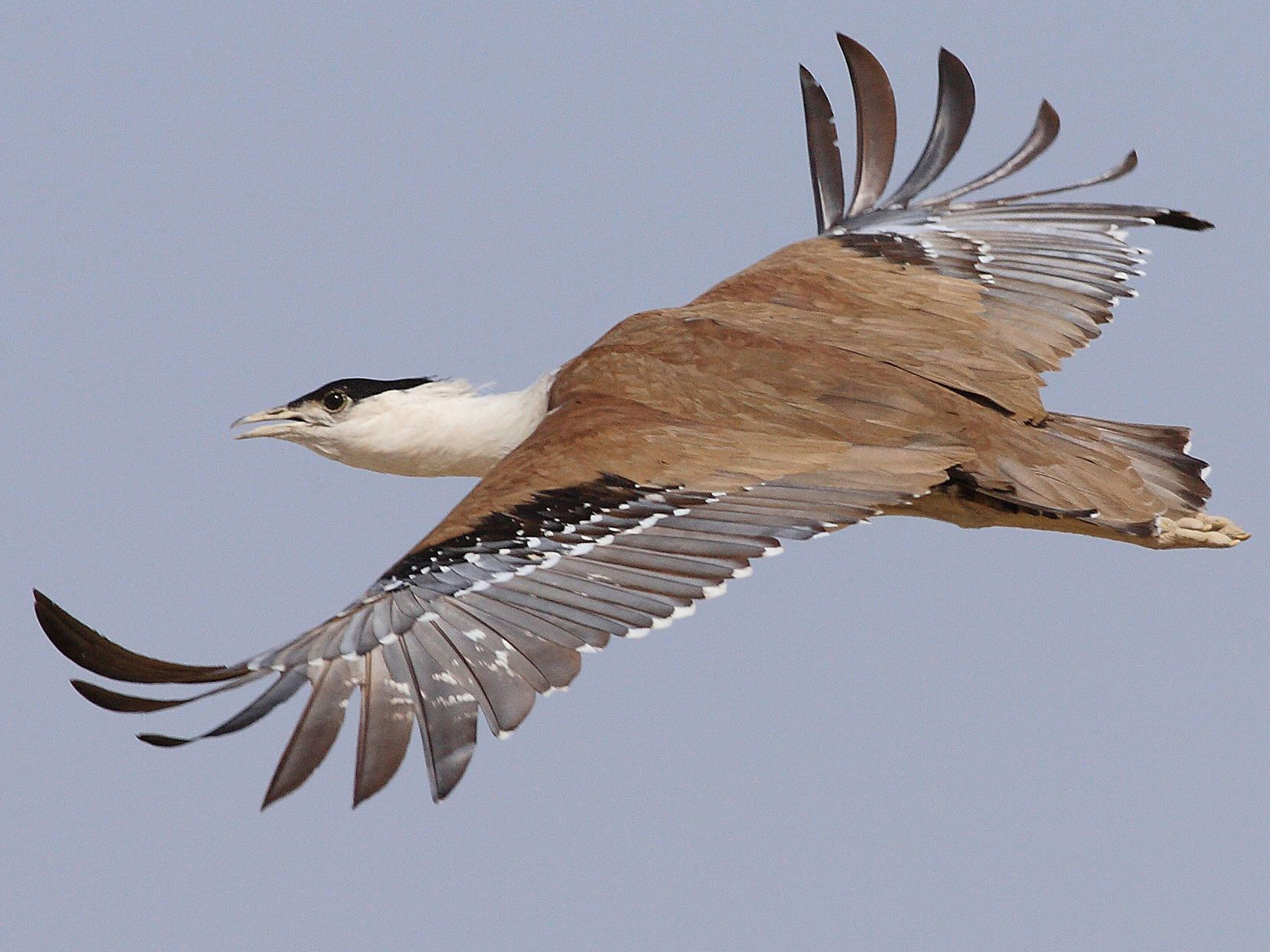Great bustard
The great bustard (Otis tarda) is a bird in the bustard family, the only member of the genus Otis. It breeds in open grassland and farmland in southern and central Europe, and across temperate Asia. European populations are mainly resident, but Asian birds move further south in winter. Portugal and Spain now contain about 60% of the world's population. It has been extinct in Great Britain since the last bird was shot in 1832. Recent attempts to reintroduce it into the UK have met with limited success. It is classified by the IUCN as "vulnerable".
The huge adult great bustard is possibly the heaviest living flying animal. It is also arguably the most sexual dimorphic extant bird species, in terms of the size difference between males and females. Going on mass, the only known bird with a higher dimorphism is the green peafowl (Pavo muticus) as the males are apparently near four times as heavy as the female.[5] Among both bustards and all living birds, the upper reported mass of this species is rivaled by that of the kori bustard (Ardeotis kori), which, due to its relatively longer tarsi and tail, is both longer and taller on average and is less sexually dimorphic.[6] In terms of weight ranges reported, the great Indian bustard (Ardeotis nigriceps) also only lags slightly behind these species.A male is typically 90-105 cm (2 ft 11 in-3 ft 5 in) tall, with a length of around 115 cm (3 ft 9 in) and has a 2.1-2.7 m (6 ft 11 in-8 ft 10 in) wingspan. The male can range in weight from 5.8 to 18 kg (13 to 40 lb). Average male weights as reported have been fairly variable: in Russia, males weighed a median of 9.2 kg (20 lb); in Spain, males weighed a mean of 9.82 kg (21.6 lb) during breeding season and 10.62 kg (23.4 lb) during non-breeding; in Germany, males weighed a mean of 11.97 kg (26.4 lb); and the Guinness World Records has indicated that prior to their extirpation male bustards in Great Britain weighed an average of 13.5 kg (30 lb). The heaviest verified specimen, collected in Manchuria, was about 21 kg (46 lb). In a study in Spain, another giant male tipped the scales at 19 kg (42 lb). Larger specimens have been reported but remain unverified.

